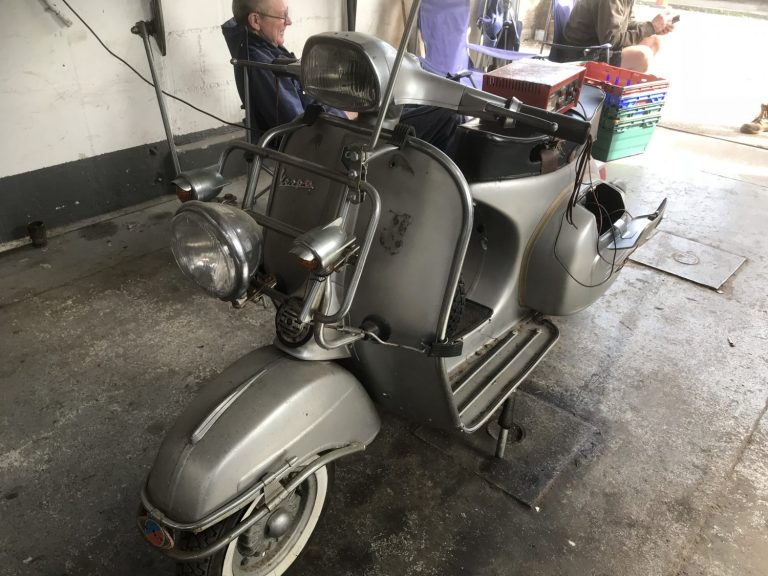
Recommission our 1975 Vespa ready for re-sale
In our workshops today we have this lovely little 1975 Vespa (Douglas) 150 Super. Having not been run up for a couple of years our


In our workshops today we have this lovely little 1975 Vespa (Douglas) 150 Super. Having not been run up for a couple of years our

In amongst the amazing history we have available on our 1929 Morris Cowley are some great photographs and we’ve even discovered a feature cover in a
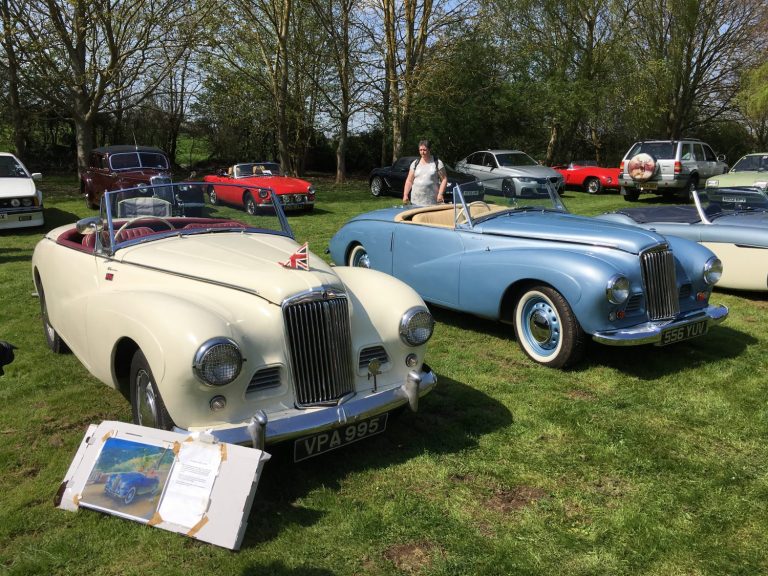
[vc_row][vc_column][vc_column_text]We had the most amazing weekend this weekend at Bridge Classic Cars. On Saturday we celebrated baby Bridge’s first birthday with a family party in
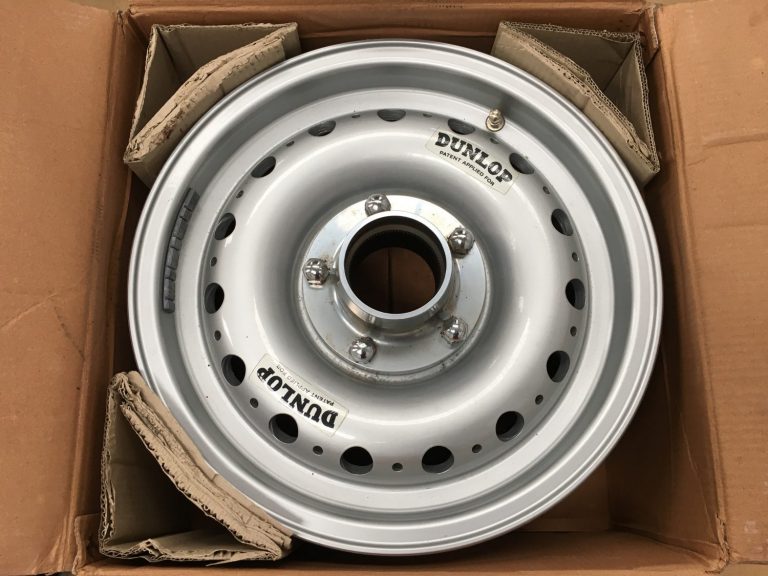
Our 1967 Jaguar E-Type Race Car has some new shoes in the form of a set of original spec Dunlop Mag DCM Racing wheels as

An idea thought up by Craig; what to do with a 1967 Jaguar E-Type body shell that is a little different to the norm. Tucked
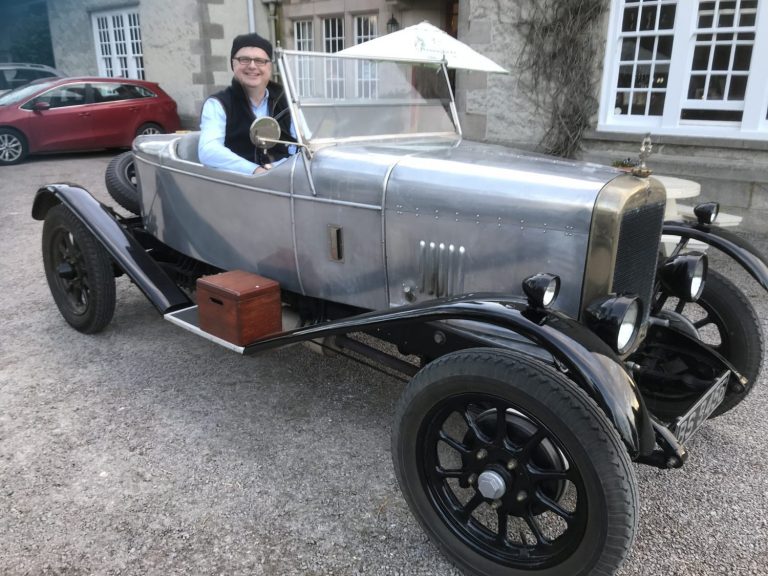
[vc_row][vc_column][vc_column_text]History The Galloway factory was close to the River Dee and had a dam fitted with water turbines to provide power, supplemented by a steam

After 6 weeks locked away in a container on a ship from the US our 1969 Jaguar E-Type had developed a bit of a wiff.

Amongst the history of our 1929 Morris Cowley we have found a lovely little story: Simon’s Story – By Alan Broughton We hope that you

The detailing of our 1974 Audi 100 Coupe engine has begun. The engine has been removed and is now up in the air for Pete
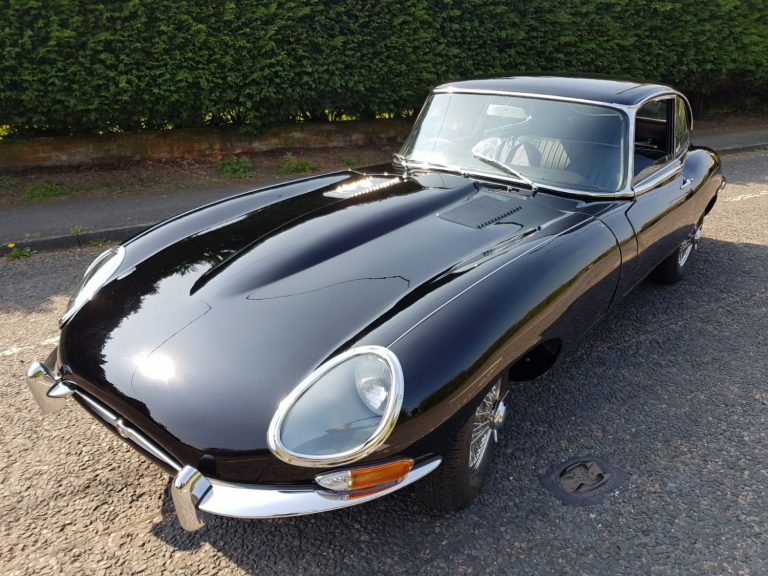
Another successful test run under our belt as we continue to enjoy the Suffolk sunshine in our stunning 1967 Jaguar E-Type Series 1.
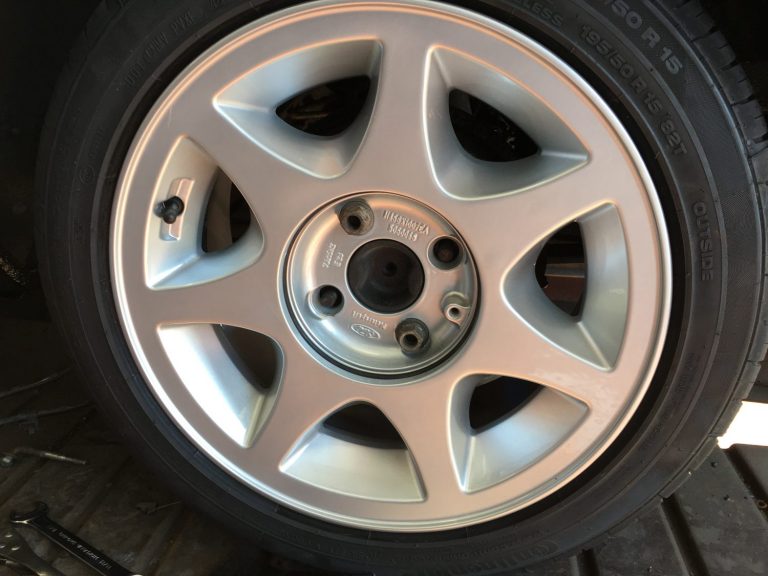
As always, a huge thank you to Trevor and the guys down at Wheelworx for their speedy turn around on our Ford Capri Wheels. The wheels were
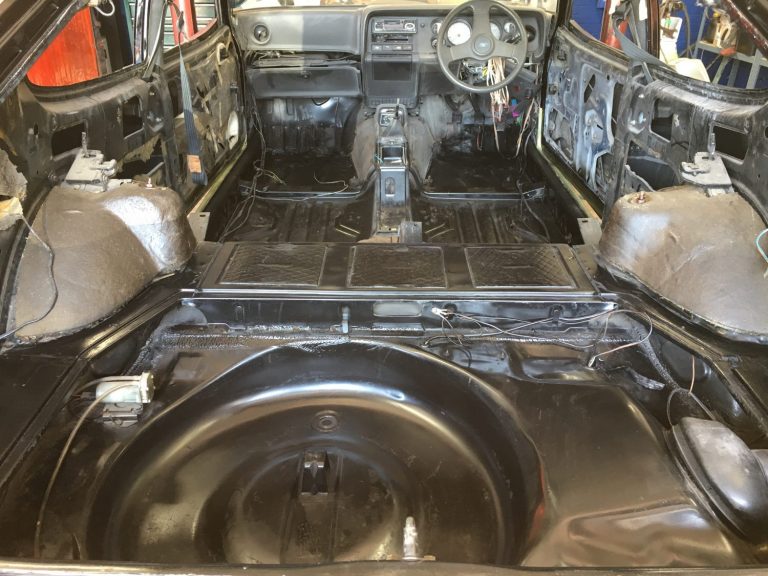
[vc_row][vc_column][vc_column_text]With the interior ready for refit Asa has cleaned out the internal area to give it a freshen up and spring clean. [/vc_column_text][/vc_column][/vc_row]
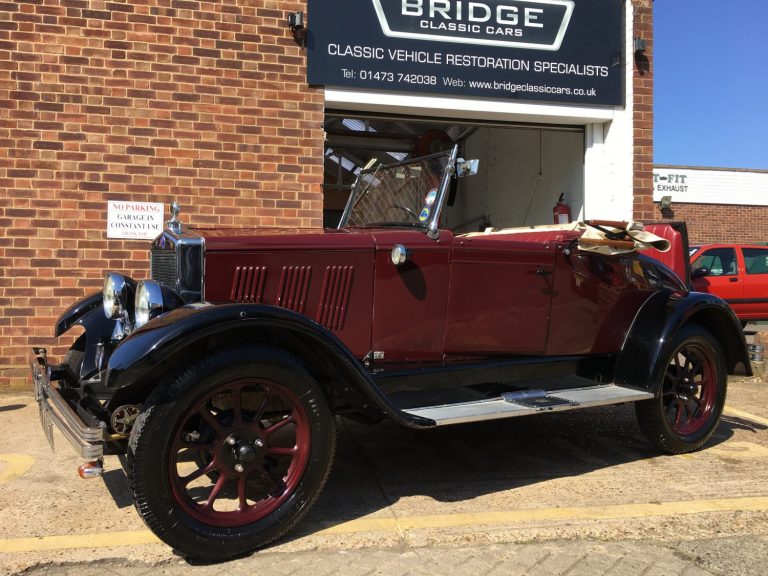
[vc_row][vc_column][vc_column_text]Many of us have seen this delightful car the shows and fetes around Woodbridge by its owner Rod ‘Holden’ Satchwell. The Morris has a very

The sun is shining so what better way to spend the day but to test drive some of our lovely cars that are nearing completion.

Source: Wikipedia Coachella is one of the largest, most famous, and most profitable music festivals in the United States and all over the world. Each

[vc_row][vc_column][vc_column_text]With the brakes now rebuilt, the engine running beautifully, a full clean and good run our 1937 International is now ready to find a new
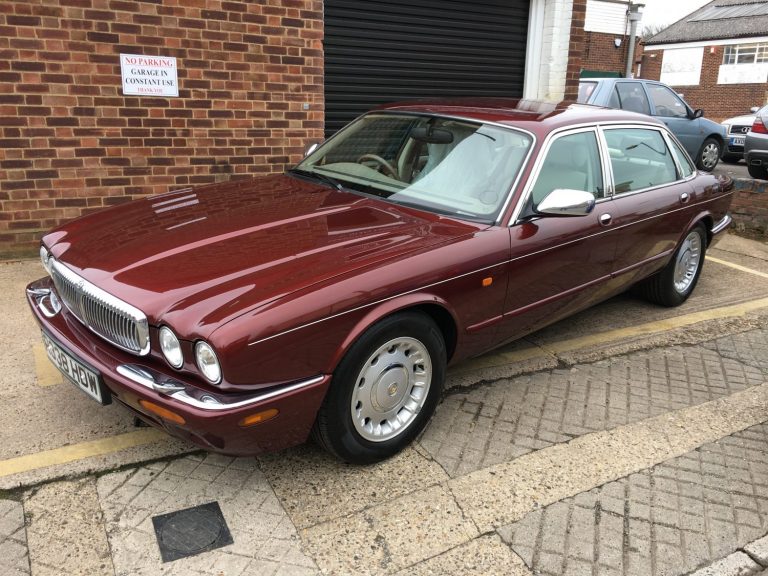
It’s now home time for our Daimler Super V8 as she is now detailed, MOT’d and ready for the summer!
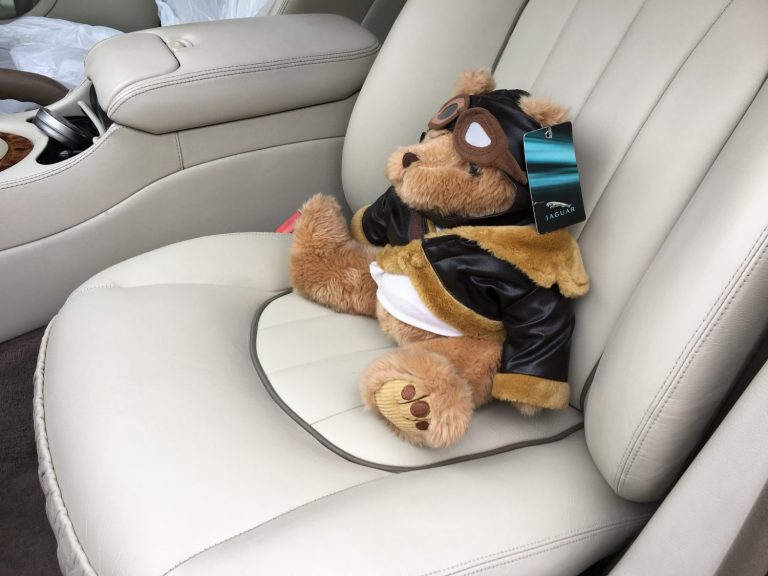
When our Daimler Super V8 arrived with us for a general check over, our task was to get her back on the road after a
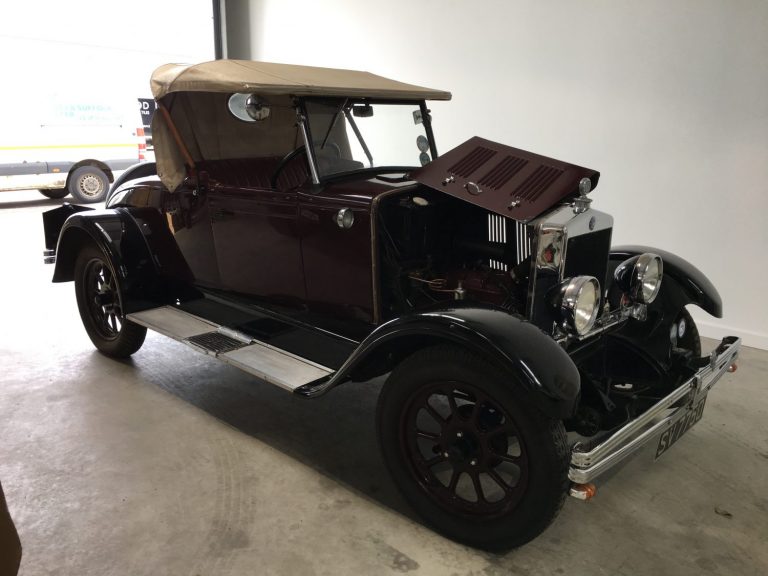
We called in to see Mike and the guys at Shine Supply UK en route back to the Bridge Classic Cars offices and whilst showing him
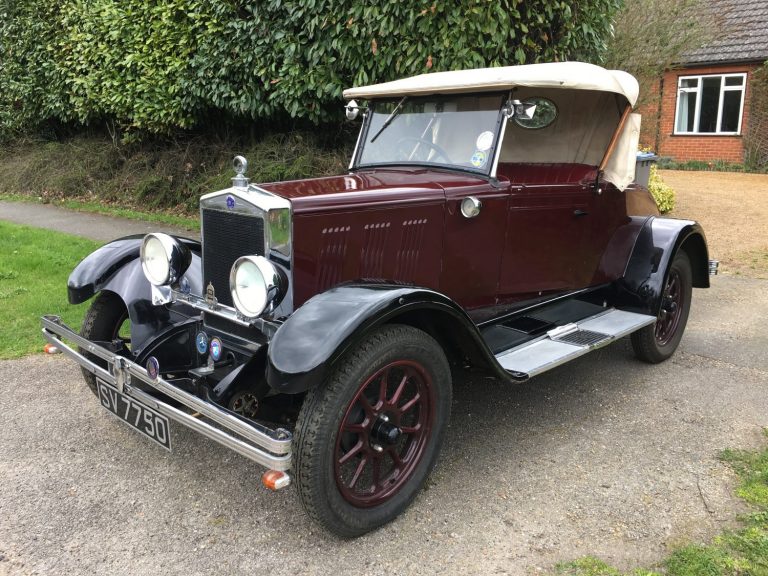
Say hello to the newest member of the Bridge Classic Cars family, our 1929 Morris Cowley. Here we are collecting her from Woodbridge, Suffolk.

Our Jaguar XJR body preparation is now complete and the car has been primed, ready for paint. Tomorrow morning we’ll apply the first coat of
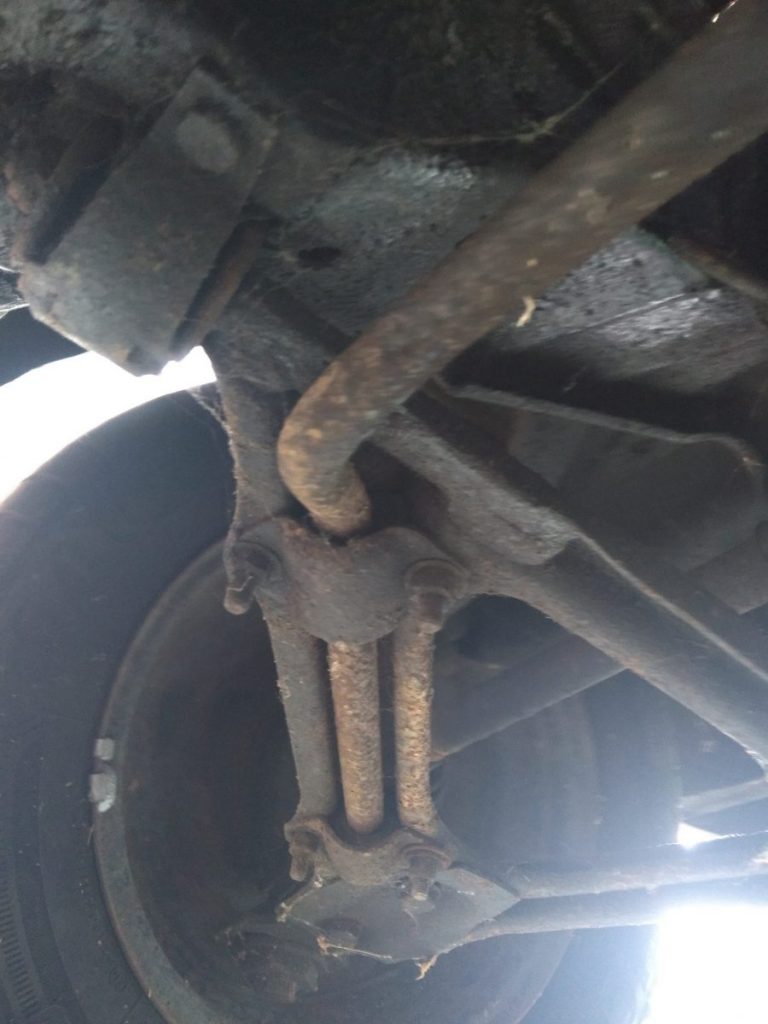
During a full restoration we strongly encourage for lots of photographers to be taken of the strip down and rebuild process. Not only does this
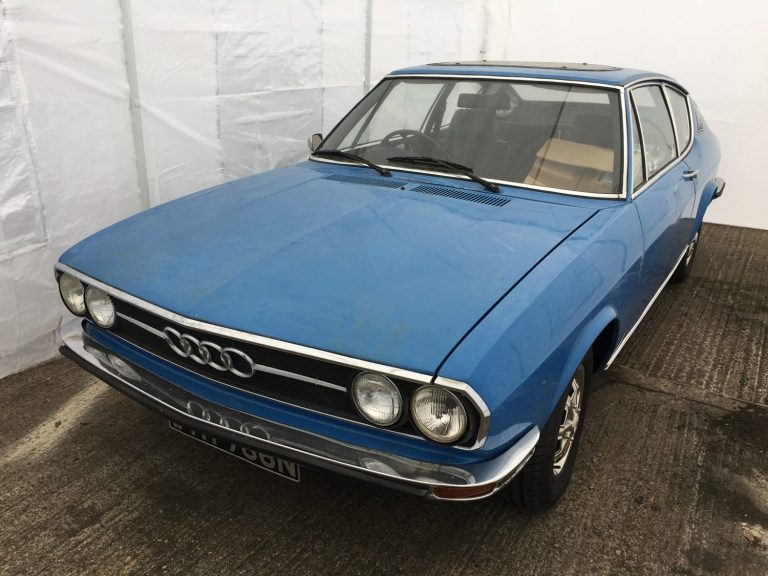
[vc_row][vc_column][vc_column_text]We begin the restoration of our 1974 Audi 100 Coupe S today. First things first we have run up the engine to ensure everything works

Here’s Instagram model Jena Frumes showing off her new Ferrari in Beverly Hills. You’re very welcome…
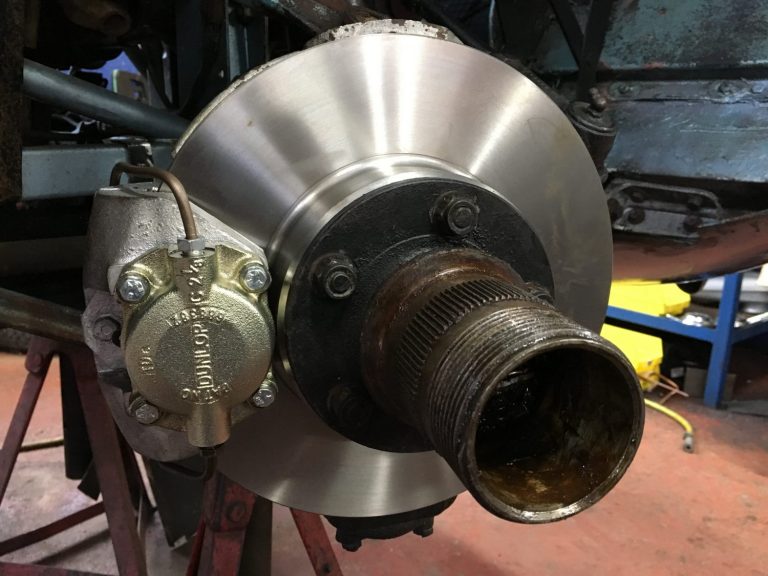
With the rear cradle removed from the car in order to rebuild the brakes we decided to clean it up and give it a new
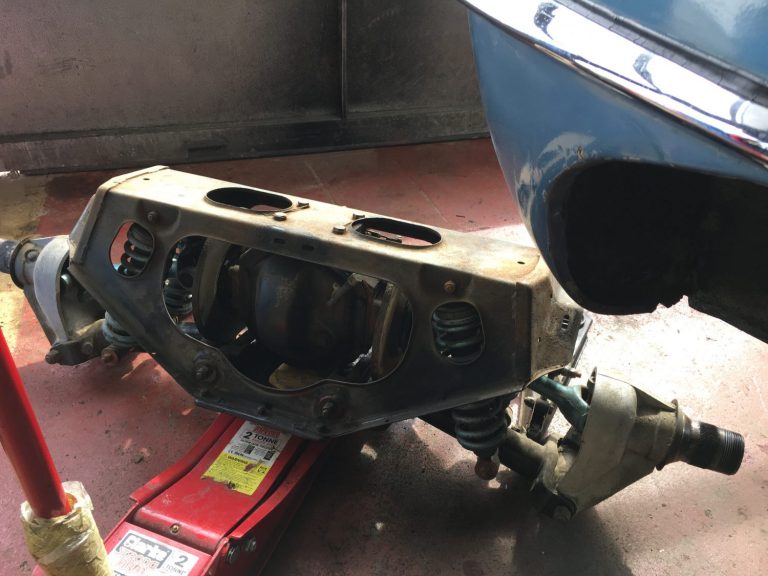
The car arrived to us with the brakes completely seized, the fluid had solidified and dried up. We’ve now stripped them back completely and are
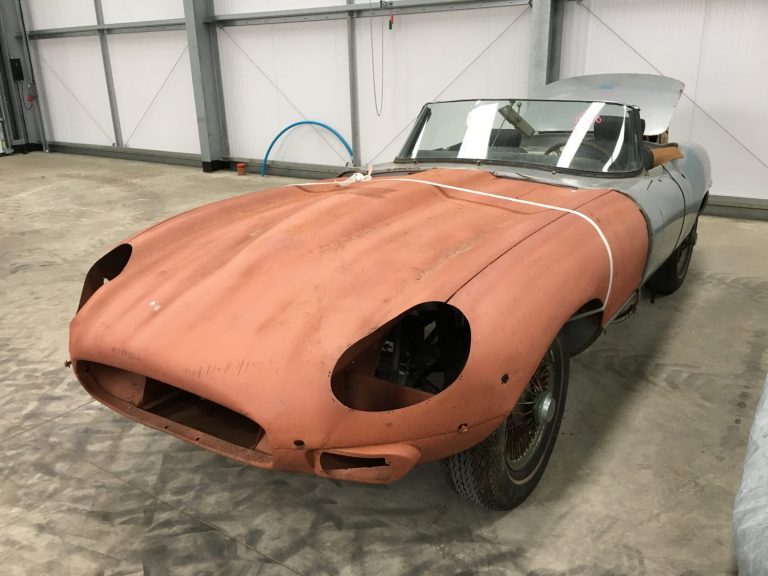
[vc_row][vc_column][vc_column_text]After 6 weeks at sea our 1969 Jaguar E-Type roadster has now arrived in the UK. The car was being stored up at CKR Services in Dartford

[vc_row][vc_column][vc_column_text]In our workshops today we have our 1981 Triumph TR7 for a MOT and service, to get her ready for the upcoming summer shows.[/vc_column_text][/vc_column][/vc_row][vc_row][vc_column][vc_gallery type=”image_grid”
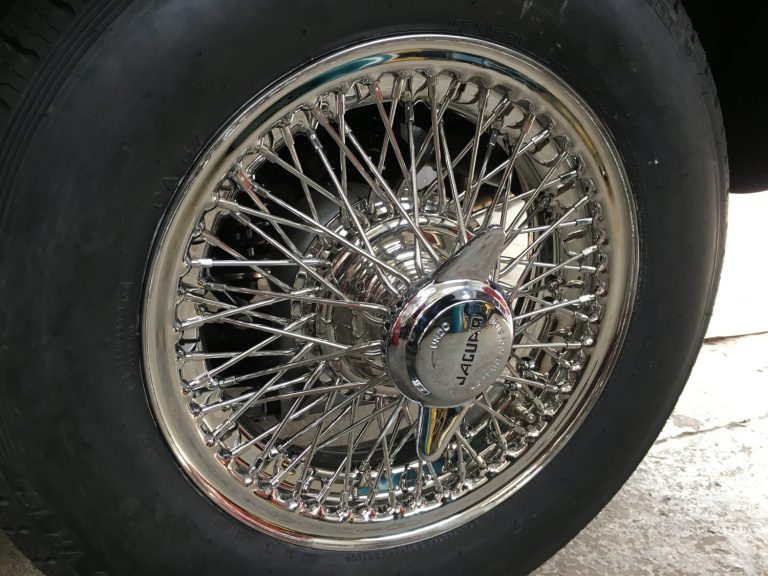
As we draw even closer to the completion of our 1967 Jaguar E-Type restorations we have a few new additions to mention; The interior is
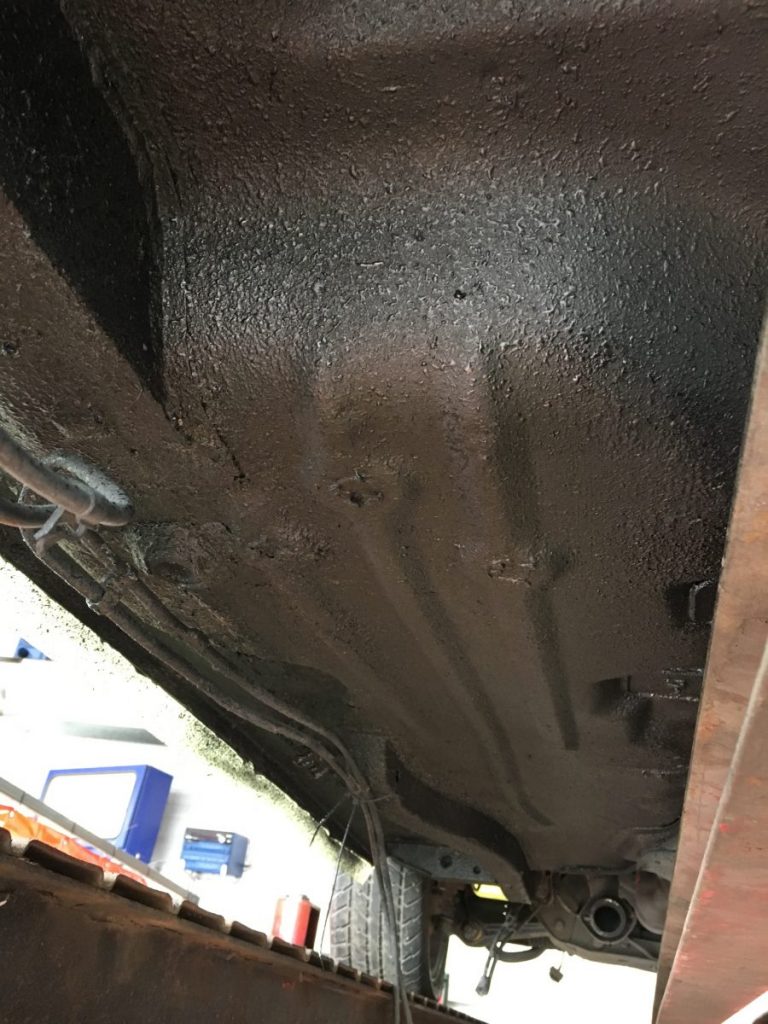
We have replicated as best we can the original look of the underside of our 1983 Ford Capri, do how it would have been in
In our workshops today we have this lovely little 1975 Vespa (Douglas) 150 Super. Having not been run up for a couple of years our aim is to get her back up and running ready for re-sale.
John was on the case with this one and it was a relatively easy one for him. Having recharged the battery, cleaned out the carbs and replaced the fuel she’s running like a dream once again.
Just needs a clean now and she’s ready for a new home.
In amongst the amazing history we have available on our 1929 Morris Cowley are some great photographs and we’ve even discovered a feature cover in a 2012 Suffolk Vehicle Enthusiasts Club publication.
[vc_row][vc_column][vc_column_text]We had the most amazing weekend this weekend at Bridge Classic Cars. On Saturday we celebrated baby Bridge’s first birthday with a family party in Woodbridge. It was lovely to get the whole family together and the sun was scorching which made the perfect day even more perfect-er!!
Then on Sunday, with the sun still beaming down Gordon and Craig spent the day at Kersey Mill for this year’s Drive It Day 2018.
Was lovely to catch up with so many familiar faces on the day including Tony from Wyatt Polishing, Howard from Howard Watts Group, Steve from Steve Johnson Car Sales, Sarah from BBC Radio Suffolk , OJ from Coutrywide, Daniel from Capel Bakery, Richard from Pond Hall Farm.
And a huge thank you to Steve and Alison De Lara-Bell for putting on such an fantastic day.
A message from the organisers: Source: Kersey Mill
A very sunny & successful Drive It Day 2018 . We saw record numbers of beautiful cars & visitors. A special thank you to all who attended & the volunteers who worked on the day & all those who kindly donated cakes& bakes & raffle prizes. We truly are grateful.
Thanks to : George de Lara-Bell . Charlie de Lara-Bell. Gary Barnes Tim Rix. Richard & Judy Cowley Rupert & Trudy Avis Chris Chaplin Kevin Wilding. Emma & Sophie Knock. Chloe Savanna. Jordanna Leeks. Ky-Anna Cook. Katelin Winfield. Shakira Winfield. Lavarney Winfield. Bill Griffiths Chris Hulcoop. Mark Barnard[/vc_column_text][/vc_column][/vc_row][vc_row][vc_column][vc_gallery type=”image_grid” images=”19294,19295,19296,19297,19298,19299,19300,19301,19302,19303,19304,19305,19306,19307,19308,19309,19310,19311,19312,19313,19314,19315,19316,19317,19318,19319,19320,19321,19322,19323,19324,19325,19326,19327,19293″][/vc_column][/vc_row]
Our 1967 Jaguar E-Type Race Car has some new shoes in the form of a set of original spec Dunlop Mag DCM Racing wheels as used at LeMans.
An idea thought up by Craig; what to do with a 1967 Jaguar E-Type body shell that is a little different to the norm.
Tucked up in our yard we had a very sorry looking 1967 Jaguar E-Type body shell. The shell comes with no V5 or registration documentation so the costly exercise of a full restoration will automatically be devalued because of this fact.
In the past we have seen tables made from engine blocks, we’ve seen desks made from bonnets but to date I have not come across a beautifully produced sofa, complete with an opening drinks cabinet made from an original Jaguar E-Type.
We are only in the design stages of the currently we have some fantastic ideas of what we could envisage the end result being and who would like such a wonderful creation…certainly a one off!
Firstly, and reluctantly Tommy has chopped our E-Type in half, keeping the rear half along with the boot lid and removing the front section. “At this stage I feel the guys are not fully on board with my idea but I’m sure I can convince them”
[vc_row][vc_column][vc_column_text]History
The Galloway factory was close to the River Dee and had a dam fitted with water turbines to provide power, supplemented by a steam engine. It also had two tennis courts on the roof
The company was very unusual in the world of car making as it was mainly staffed by women.
For a while the cars were advertised as “a car made by ladies for others of their sex”.
The factory had originally been built as a wartime aero engine plant and Thomas Pullinger the manager of Arrol-Johnston, was persuaded by his daughter Dorothee Pullinger to keep the factory open to provide local employment.
She was made a director of the new enterprise and set up training courses and apprenticeships specifically for local women.
The apprenticeships were to last for three rather than the usual five years as the girls were thought to be better at attending and quicker learners than boys.
The cars were sturdy and straight forward and a one model policy was pursued with, at first, the 10/20, which was heavily influenced by the Fiat 501.
It was not however a good time to launch a new car and only a few hundred were made before the Tongland factory was forced to close in 1923 and production moved to the parent works at Heathall which had plenty of spare capacity.
The Tongland factory was later used to make silk.
A second, larger, Galloway model, the 12, essentially an Arrol-Johnston, replaced the 10/20 in 1925 and remained in production until Arrol-Johnston itself closed in 1928 and Galloway Motors was formally wound up. In all a total of around 4000 Galloway cars were produced.
Dorothée and her husband went on to set up using new American machinery White Services Laundries Limited in Croydon which soon had 17 shops.
This 1925 Galloway.
Whilst staying with Gavin and Penny at the beautiful Knockolmie Hotel in Forres on the outskirts of the Cairngorms it was soon obvious that Gavin and Gordon had a lot more in common than wining and dining.
The conversation soon turned to an MGBGT that was in one of the sheds which we still haven’t looked at. Then the tale of how his Alvis TD21 needs a sympathetic recommissioning, his interest in steam trains, some track that he just happened to have and then the Dumfries built 1925 Galloway. The latter I must admit stumped me, which doesn’t happen very often.
Thursday night as I was having a drink in the bar a sound came rattling up the driveway with Gavin, cap round the wrong way and looking very much the part came to a halt, big beaming smile and waved.
As you will see the 1925 Galloway has been rebodied in aluminum as a beautiful boatail.
The engine rocker has the name and place of origin.
I must say I love it and a little bit jealous.
My advice is book a nice weekend away in the beautiful Morayshire in the north of Scotland and I am sure Gavin would love to tell you all about it.
If your also into another fine product of Scotland, then the whisky shelf will be a must and Penny who is an expert on all things whisky will be very willing to help the uninitiated.[/vc_column_text][/vc_column][/vc_row][vc_row][vc_column][vc_gallery type=”image_grid” images=”19177,19178,19179,19180,19181,19182,19183,19184,19185,19186,19174,19175″][/vc_column][/vc_row]
After 6 weeks locked away in a container on a ship from the US our 1969 Jaguar E-Type had developed a bit of a wiff.
Inside the car showed signs of animal activity with lots of mouldy faeces all over. The smell was quite revolting so having purchased some hazardous white suits John took on the task of removing the contents, throwing away what wasn’t required and giving our shell a good thorough high pressure wash. Luckily the work took place on this year’s hottest day so the job could be undertaken outside and the pressure wash soon dried up to reveal a nice shiny shell minus the smells and questionable fluff!
We’ve rescued what parts of the seats we could and we’ve kept hold of the good cushioning and leather to act as templates for when we look to re-upholster the car during it’s restoration.
Amongst the history of our 1929 Morris Cowley we have found a lovely little story:
Simon’s Story – By Alan Broughton
We hope that you will find this interesting, it is the story of Simon, our simplified Cowley. In 1927-28 William Morris returned briefly to a previously unsuccessful sales idea, to offer a basic no frills Cowley without the optional extras.
This was known as the ‘simplified’ or plain Cowley. These cars came without front brakes, shock absorbers, spring gaiters, headlights, temperature gauge, clock, speedometer, wipers, horn or rear view mirror. All for a saving of £11.50 for the two seater and £14.00 for the four seater. You could only have a blue one in 1927 or a grey one in 1928! Although factory records show that a large number of plain Cowley’s were built, none were known to survive until ours was found. This is because over the years people have put the missing bits on and turned their plain Cowley into an ordinary one thus loosing it’s original identity.
Our car left the works like an IKEA flat-pack in March 27. The bodywork to be finished (built) in Australia. It therefore qualified as a locally built car and was exempt from import duty. It passed through the hands of various people and hit every tree stump and rock between Sydney and Wagga-Wagga before it was discovered in 1992.
Those of you with access to a copy of ‘The Automobile’ of April 1992 can read the story of that discovery.
It was acquired by a dealer who soon had it in a crate with a newly discovered Crossley on it’s way back here where prices were higher. At this stage a gentleman with a burning desire and enough brass to own a Crossley enters the story, and buys the contents of the crate unseen while its still on the high seas. This man was very ill by the time the crate arrived and the Morris was collected from the docks for him and pushed back into a very narrow shed at his house. Fortunately his health improved but not his love of Morris’s so for the next five or so years he would occasionally open the door, say, ‘oh yes that’s the Morris’ and close it again.
At that time in addition to our Morris’, we also had a V8 Ford Woodie which had impeccable manners as long as Christine drove it. Every time I took it out it went expensively wrong, never the same thing twice and never cheap. So a straight swap was arranged through a mutual friend and every one said we had gone mad. An ‘as found’ unrestored wreck for a rebuilt car with and MOT, but I was determined to see the back of that expensive animated pile of firewood!
The garage was so narrow that you could not get down the side of the Cowley and so nobody had got a good look at it. When the doors were opened our reaction was the same as everyone else’s, it’s a two seater and dickey with funny headlights But as we slowly towed it from its resting place, it became apparent that this was not quite what it seemed. Even the owner who had never seen it properly before offered to forget the whole deal if we wanted to but we stuck to our guns and were soon heading south with the Cowley on a trailer. I kept checking the rear view mirror and by the time we got home I had mentally rebuilt it and attended several rallies.
The car looked so complete and original that after the first glance we had kidded ourselves that this would be a rolling restoration, oh boy were we wrong! A life in a hot dry climate brought a whole new and unexpected set of problems. Whilst the metal does not rot, the rubber turns as hard as rock, wood cloth and leather crumble to dust, and the lack of rust actually causes the biggest problem. These cars were so over specified when they were built that in this country they usually rotted away before they wore out, however in Australia they just kept going.
I have never seen a car so totally and utterly worn out as this one. Every rivet that remained in the chassis was loose and although a steam clean of the back axle revealed an unblemished blue steel casing just as it had come from the press it could not be used because the ends where the wheel bearings fit were almost completely worn away. We were also surprised to find that although the outer body skin was mostly in place, at the back the panels were nailed to strips of charcoal and none of the wood remained! Subsequent research revealed that a previous owner’s house had been damaged by a bushfire back in the 60’s and although the back of the garage and car caught fire, the car survived because the petrol tank was at the front source non-mechanical parts was a great problem as everything from the screen back was built in oz and although it was basically the same shape as a two seater-and-dickey, it was in fact, three seater roadster with a boot, and the coach buiders brought all their supplies from America. The rear side panels for instance would appear to be Model A Ford crash repair panels, as they are pressings requiring something like a two hundred ton press to produce them where as the rest of body work is single curvature stuff that could be made on a set of hand rollers.
It also has a beautiful pair of bevelled glass wind deflectors fitted to the screen to make it wider. This is because at the seat it is Australian and three bums wide, but at the screen it is British and only two bums wide. Whilst lowering the tone of this narrative I could repeat the details of a discussion I had about out car with an elderly Australian lady whose family had Morris’s when she was young. She spoke with the cultured tones of one who had been to an English finishing School for young ladies, but she had not lost the Australian ability to call a spade a spade. She could not recognise the car from my description but as soon as I mentioned the Australian body work she said, ‘oh you’ve for a F**K truck’. After a few seconds of opened mouth disbelief from me she explained that British built cars had a solid section running across behind the front seat to give them extra strength where as Australian body cars did not. This was because the distances between towns was so great that you could not drive from town to town in a day and you did not want to sleep on the ground at night. So you removed the front seat, put a ‘midget’ net over the open boot lid and you had an insect proof double bed!
For those who like the technical bits this car had one more surprise up its sleeve. When the engine was stripped for rebuilding it was found to have several bits that should bits that should not have been there and they were all stamped with the No2. This is definitely the original engine and given the fact that the car is still in its original simplified spec. It seems unlikely that any past owners would have paid for expensive and totally unnecessary machining work to be done to the engine. Therefore we are left with the conclusion that this is an experimental engine, fitted at the works on a ‘suck it and see’ basis. We do not know that Morris was looking at different materials for the camshaft timing wheel to reduce clatter at tick over. he eventually settled for bronze but our engine has a silent running fibre one.
The internal oil ways are drilled into the block which means that the early and later oil pumps are not interchangeable, but our engine has the later type pump exactly three thousand engine numbers before they went into production. Finally the webs on the crankshaft have been hand ground to the same shape that the later ones were cast to.
Under layers of oil soaked road dust we also found a set of numbers stencilled upside down in white on the side of the engine.
Only three other cars have been found like this and nobody knows what they are. The best guess so far is that they are from the foundry to identity the mould at the start of a new batch. In this way any faults that showed up in the machining could be traced back to source and rectified. Engine numbers of course were not added until after the units were built up.
Many many hours of work went into the restoration with Christine doing all the upholstery, part of which was to design the hood. If you remember the comments about the seat, the hood frame when folded down has to be wide enough to go around the seat. But when it is up it has to form a wind proof seal onto the side widows which taper into the much narrower screen and with nothing left of the hood and no pictures to guide her, she has done a perfect job. the only thing we were unable to restore was the old transfer badge of the Australian Automobile which was on the original cracked windscreen.
With his lack of shock absorbers, Simon now happily bounces around the roads of Wales but he really does miss his Australian sun shine!
Alan and Chrstine Broughton
Swansea
After a little research on Alan and Christine we see that a Meteor owned by a Alan Broughton was seen at a past Swansea Historic Vehicle Register event.
The detailing of our 1974 Audi 100 Coupe engine has begun.
The engine has been removed and is now up in the air for Pete to work his magic on it. As the engine was running sweat prior to it’s removal this is not a full rebuild requirement. Gaskets and seals will be replaced as we strip to clean so this will be as far as we need to go on this one.
…other than a really good clean obviously!
Looking great so far, the cast is cleaning up fantastically so she’ll look like a new engine in no time.
Another successful test run under our belt as we continue to enjoy the Suffolk sunshine in our stunning 1967 Jaguar E-Type Series 1.
As always, a huge thank you to Trevor and the guys down at Wheelworx for their speedy turn around on our Ford Capri Wheels.
The wheels were in great condition as they were but with a full restoration well underway and the car looking as good as new the wheels needed to be freshened up.
[vc_row][vc_column][vc_column_text]With the interior ready for refit Asa has cleaned out the internal area to give it a freshen up and spring clean.
[vc_row][vc_column][vc_column_text]Many of us have seen this delightful car the shows and fetes around Woodbridge by its owner Rod ‘Holden’ Satchwell. The Morris has a very interesting history. It was one of a batch of chassis sent by Morris Motors to Australia in the late 20’s or early 30’s. There the chassis was received by Holdens who manufactured the two seat body you see on it today. The Morris is also unique in that it has a ‘rumble seat’ where normally the boot would be; unfortunately the ‘rumble seat’ will only take two very small people or one adult in very cramped circumstances.
Until the Morris was repatriated to the UK in 2008 the Morris had spent its entire life in Australia and it is believed that the car had four owners during its life in Australia; what is not known however is the precise mileage of the Morris.
The basic mechanical specification of the Morris is as follows:
[/vc_column_text][/vc_column][/vc_row][vc_row][vc_column][vc_gallery type=”image_grid” images=”19148,19147,19146,19145,19144,19143,19142,19141,19140,19139,19138,19137,19136,19135,19134,19133,19132,19131,19130,19129,19128,19127,19126,19125,19124″][/vc_column][/vc_row]
The sun is shining so what better way to spend the day but to test drive some of our lovely cars that are nearing completion.
Th 1929 Morris Cowley, the 1975 Maserati Merak, the 1974 Triumph GT6 and our stunning 1967 Jaguar E-Type have all taken to the roads today.
Coachella is one of the largest, most famous, and most profitable music festivals in the United States and all over the world.
Each Coachella staged from 2013 to 2015 set new records for festival attendance and gross revenues.
The 2017 festival was attended by 250,000 people and grossed $114.6 million.
This year’s event played host to clothing brand Revolves classic MG display with international superstars from all over the world loading pictures to their social media platforms of them in or around the setting.
Here we have models Jena Frumes and Jordan Carver taking advantage of the amazing backdrop.
I wonder which future auction we’ll see this classic turn up in. Will being seen by billions all over the world make this classic a valuable little piece.
[vc_row][vc_column][vc_column_text]With the brakes now rebuilt, the engine running beautifully, a full clean and good run our 1937 International is now ready to find a new home.
We all love her here and everyone who passes by does to so we have no hesitation that she’ll be back on the road with a new owner in no time.
[/vc_column_text][/vc_column][/vc_row][vc_row][vc_column][vc_gallery type=”image_grid” images=”19035,19056,19055,19054,19053,19052,19051,19050,19049,19048,19047,19046,19045,19044,19043,19042,19041,19040,19039,19038,19037″][/vc_column][/vc_row]
It’s now home time for our Daimler Super V8 as she is now detailed, MOT’d and ready for the summer!
When our Daimler Super V8 arrived with us for a general check over, our task was to get her back on the road after a year in storage and to get her ready and MOT’d for the summer.
One of the areas that we were asked to look at was the tired looking front seats.
As with a lot of Jaguar/Daimlers the interior was starting to show signs of wear, particularly around the bolster. A simple but costly resolution would be to re-cover the seats but this was not the direction we wanted to take.
The car is lovely as it is and does shows signs of age. The owner wished to keep it this way and did not want the interior completely re-covered.
We decided to treat the front and back seats to a full refurbishment. This involved feeding the leather with new colour. We also needed to imprint the seats with the leather texture to keep the continuity of the pattern throughout. The seats have been completely transformed and this exercise, along with a full exterior and engine detail has given our Daimler a completely new lease of life.
The sun is shining as I write this so I do hope she’s out and about in Framlingham right now!!
We called in to see Mike and the guys at Shine Supply UK en route back to the Bridge Classic Cars offices and whilst showing him our new arrival he said he would spent a few hours working on the roof to see whether a bit of elbow grease might shift some of the grime that had built up over the years.
It was an unexpected drop off but I think the pictures speak for themselves.
Say hello to the newest member of the Bridge Classic Cars family, our 1929 Morris Cowley.
Here we are collecting her from Woodbridge, Suffolk.
Our Jaguar XJR body preparation is now complete and the car has been primed, ready for paint.
Tomorrow morning we’ll apply the first coat of gloss black.
During a full restoration we strongly encourage for lots of photographers to be taken of the strip down and rebuild process. Not only does this help with the rebuild of the vehicle but is also a very simple and effective way of building on the service and maintenance history of the vehicle. Let’s face it, we all like a car with history.
Here are a few images of our Audi 100 Coupe S strip down.
[vc_row][vc_column][vc_column_text]We begin the restoration of our 1974 Audi 100 Coupe S today.
First things first we have run up the engine to ensure everything works as it should before we look to remove it from the car to be work on and detailed.[/vc_column_text][/vc_column][/vc_row][vc_row][vc_column][vc_video link=”https://www.youtube.com/watch?v=_KUDi9tz6Zg” align=”center”][/vc_column][/vc_row]
Here’s Instagram model Jena Frumes showing off her new Ferrari in Beverly Hills.
You’re very welcome…
With the rear cradle removed from the car in order to rebuild the brakes we decided to clean it up and give it a new paint finish just to freshen it up. It is important to think of the smaller jobs at every step of the way as the opportunity to clean up and paint components like this may not crop up again for a good number of years, if at all.
the new master cylinder and servo have now been fitted too.
And the new discs and calipers are now also fitted too so we will soon be good to go…and stop!!
The car arrived to us with the brakes completely seized, the fluid had solidified and dried up.
We’ve now stripped them back completely and are now in the process of rebuilding the front and rears.
Whilst the rear cradle is out we will clean up and re-paint so give it a fresh look.
[vc_row][vc_column][vc_column_text]After 6 weeks at sea our 1969 Jaguar E-Type roadster has now arrived in the UK. The car was being stored up at CKR Services in Dartford so we took a trip across the M25 to collect her.[/vc_column_text][/vc_column][/vc_row][vc_row][vc_column][vc_gallery type=”image_grid” images=”18973,18974,18975,18976,18977,18978,18979,18980,18981,18982,18983,18984,18985,18986,18987,18988,18989,18990,18991,18992,18993,18994,18995,18996″][/vc_column][/vc_row][vc_row][vc_column][vc_column_text]When arriving into the yard we were immediately greeted by a beautiful Mercedes 280SL, ready to be collected.[/vc_column_text][/vc_column][/vc_row][vc_row][vc_column][vc_gallery type=”image_grid” images=”18997,18998,18999,19000,19001,19002″][/vc_column][/vc_row][vc_row][vc_column][vc_column_text]Now safely stored away in our new Woodbridge workshops ready for the future start date.
[vc_row][vc_column][vc_column_text]In our workshops today we have our 1981 Triumph TR7 for a MOT and service, to get her ready for the upcoming summer shows.[/vc_column_text][/vc_column][/vc_row][vc_row][vc_column][vc_gallery type=”image_grid” images=”18936,18935,18934,18933,18932,18931,18930,18929″][/vc_column][/vc_row]
As we draw even closer to the completion of our 1967 Jaguar E-Type restorations we have a few new additions to mention;
The interior is almost all in now, just completing work on the centre console but the rear seats, boot area are now all in and looking incredible.
The rear view mirror is now fitted.
And the brand new wire wheels and tyres have now been fitted up.
We have replicated as best we can the original look of the underside of our 1983 Ford Capri, do how it would have been in the 80s.
Now the exterior has been fully re-sprayed we have turned our attention to the underside to ensure it is as good underneath as it is on top.
Bridge Classic Cars are award winning Classic Car Restoration and Maintenance specialists. Your pride and joy is in safe hands with our expert Classic Car Technicians. Take a look at our awards here.